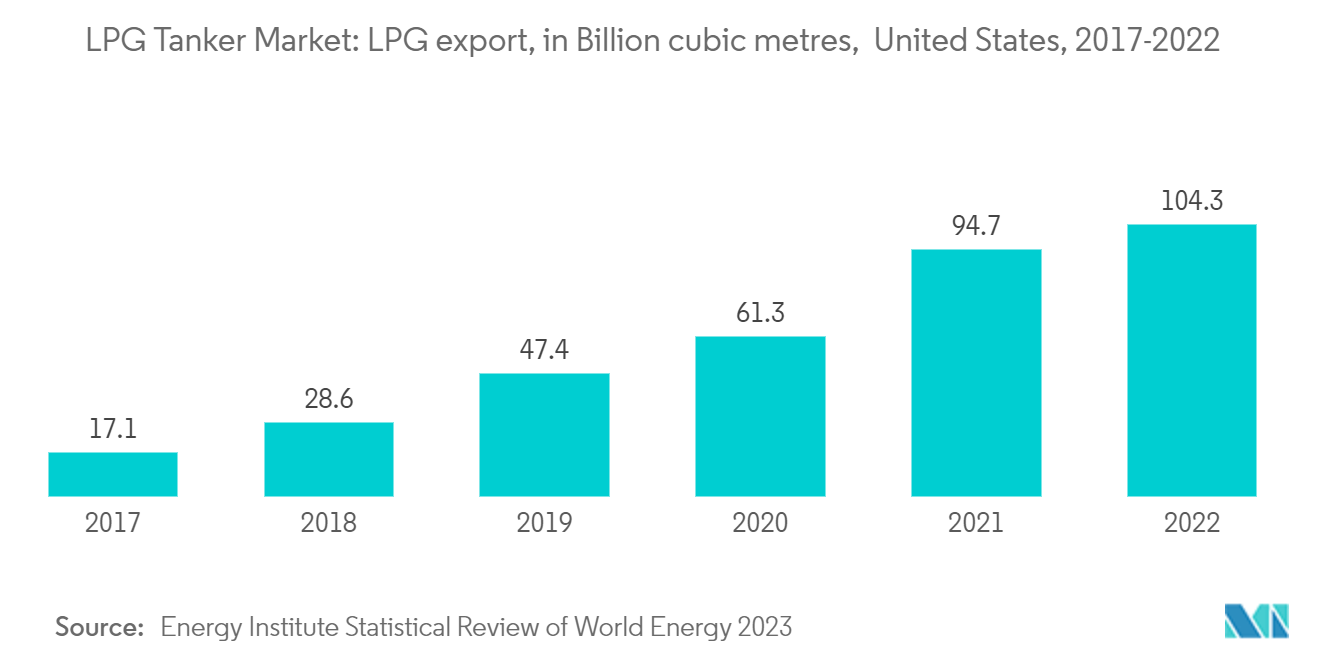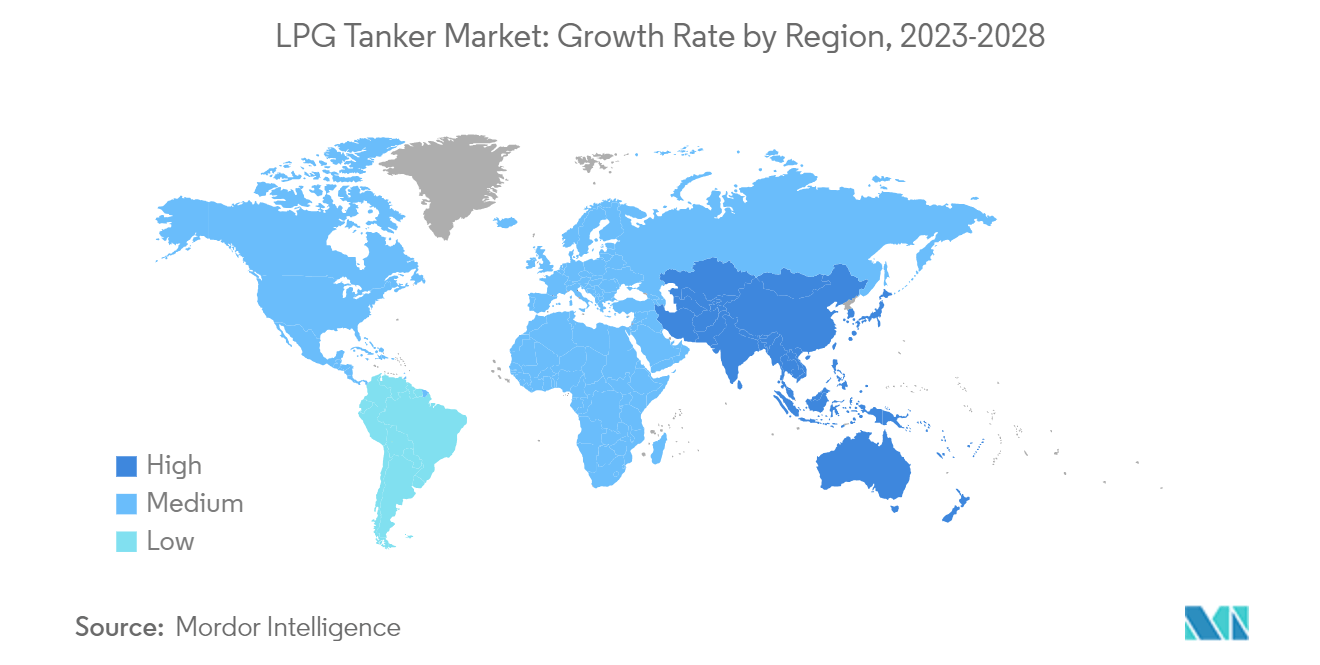Market Trends of LPG Tanker Industry
Very Large Gas Carrier segment is expected to witness significant growth
- Very Large Gas Carriers (VLGC) are widely used to transport LPG gas for longer distances across various countries. Growing liquefied petroleum gas trade relationships between countries, such as the Middle East and Asian countries, Western Africa and Europe, and the United States, is the major factor boosting the large carrier segment.
- VLGC vessels are generally around 250-300 meters long and have four to six storage tanks along the centerline.
- There are several advancements in constructing Very large gas carriers in various countries. For instance, in July 2023, NYK announced the order of its sixth liquefied petroleum gas (LPG) dual-fuel very large LPG / liquefied ammonia gas carrier (VLGC) from Kawasaki Heavy Industries Ltd. (KHI). The ship will be built at the KHI Sakaide Works shipyard and is set for delivery in 2026.
- In April 2023, Harzand, the world's first large liquefied gas carrier with a capacity of 93,000 cubic meters developed, designed, and built by Jiangnan Shipyard under China State Shipbuilding.
- Further, there are increasing LNG exports from several countries. United States is one of the major LNG exporters globally. According to Energy Institute Statistical Review of World Energy 2023, the United States exported 104.3 billion cubic metres of LNG in 2022, with a growth rate of 10.13% from the previous year.
- Thus, the points mentioned above suggest that the LPG tanker market is expected to grow positively with the increase in trade relationships and the introduction of new, Very Large Gas Carriers.

North America is expected to dominate the market
- Government initiatives in Canada to provide incentives, fuel subsidies, and distribution licenses to promote large consumption and usage of LPG fuels, especially in the transport and cooking sectors, are anticipated to accelerate the LPG market growth during the forecast period.
- Further, the governments in the region are concentrating on using LPG to reduce the percentage of the death rate due to the harmful gases produced from the combustion of conventional fossil fuels like wood, cow dung, and coal. Such initiatives will likely increase the LPG Tanker market demand in the coming years.
- Out of the total NGL production in North America, most goes to LPG production. Moreover, the contribution of the United States, Canada, and Mexico to LPG production from the crude oil refineries makes North America one of the main LPG-producing regions.
- In July 2023, the US government authorized liquefied petroleum gas exports to Venezuela. All transactions and activities related to the exportation or re-exportation, directly or indirectly, of liquefied petroleum gas to Venezuela, involving the Government of Venezuela, Petróleos de Venezuela (PdVSA), or any entity in which PdVSA owns, directly or indirectly, a 50 percent or greater interest, are allowed.
- The points mentioned above suggest that the LPG tanker market is expected to grow exponentially in North America owing to the introduction of new liquefaction trains and demand from other regions.


